Wondermondo 🢖 World 🢖 Wonders of Europe 🢖 Wonders of the United Kingdom 🢖 Wonders of Scotland 🢖 Wonders of the Orkney Islands
Territory
Wonders of the Orkney Islands
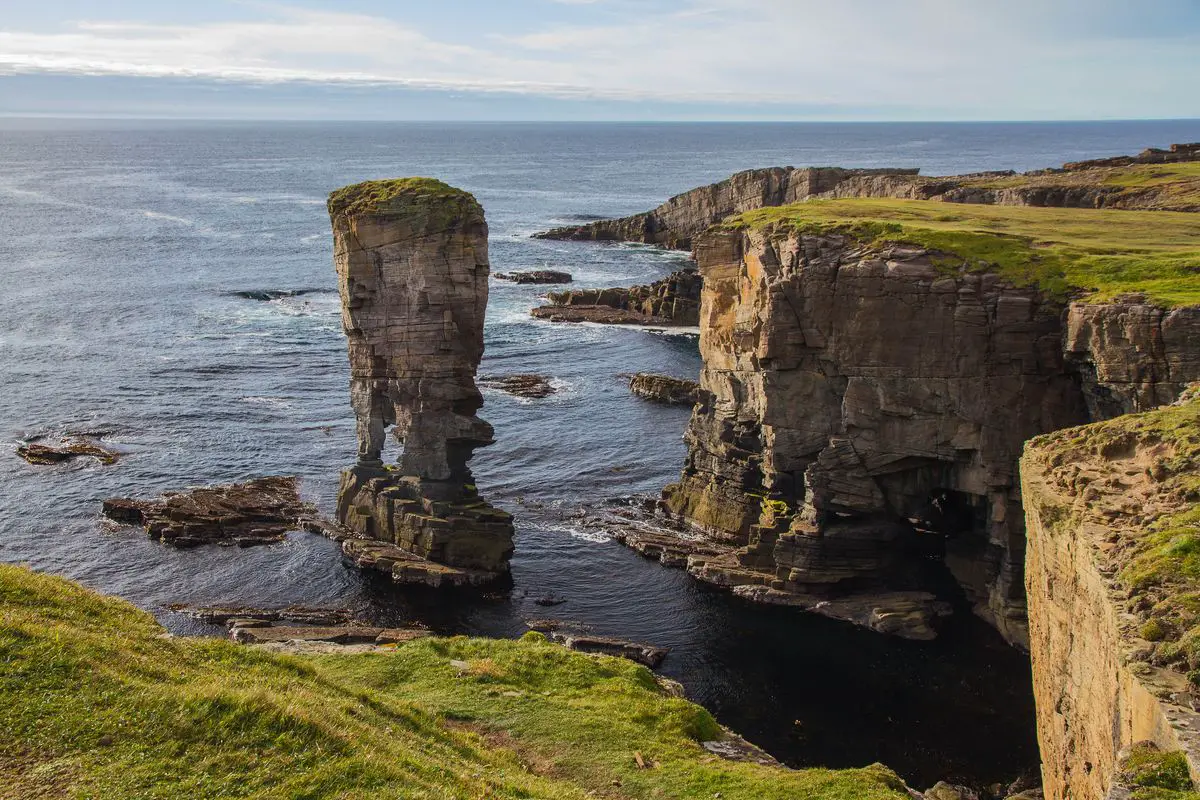
 Highlights
Highlights
Some of the wonders of the Orkney Islands are known internationally, but the true scale of the cultural heritage found on these small islands is hard to grasp. Remote, desolate islands are packed with remnants of past cultures and too often it is obscure to us: why this or that was built and even – how it was accomplished.
The most amazing wonders of the Orkney Islands are:
- Neolithic settlements – some of the best preserved ancient settlements in the world.
- Neolithic cairns – large, complex megalithic structures with diverse architecture.
- Stone rings and standing stones – well preserved megalithic stone rings as well as numerous giant standing stones.
- Brochs – belong to the most amazing dry stone structures in the world. These Iron Age towers have thick walls with passages inside the walls.
- Early medieval churches – Orkney Islands served as the northernmost center of early Christianity in the world.
- Sea stacks and natural arches – harsh seas are eroding the Old Red Sandstone of islands and as a result there have formed numerous amazing coastal formations.
Map with the described wonders
If you see this after your page is loaded completely, leafletJS files are missing.
 Top 25 wonders of the Orkney Islands
Top 25 wonders of the Orkney Islands
Geological wonders
Old Man of Hoy
137 m tall, incredibly thin sea stack that may collapse soon.
Yesnaby Castle
Spectacular, 35 m tall rock spire rising from the sea. A hole goes through the rock closer to its base and the rock spire seems to defy gravity.
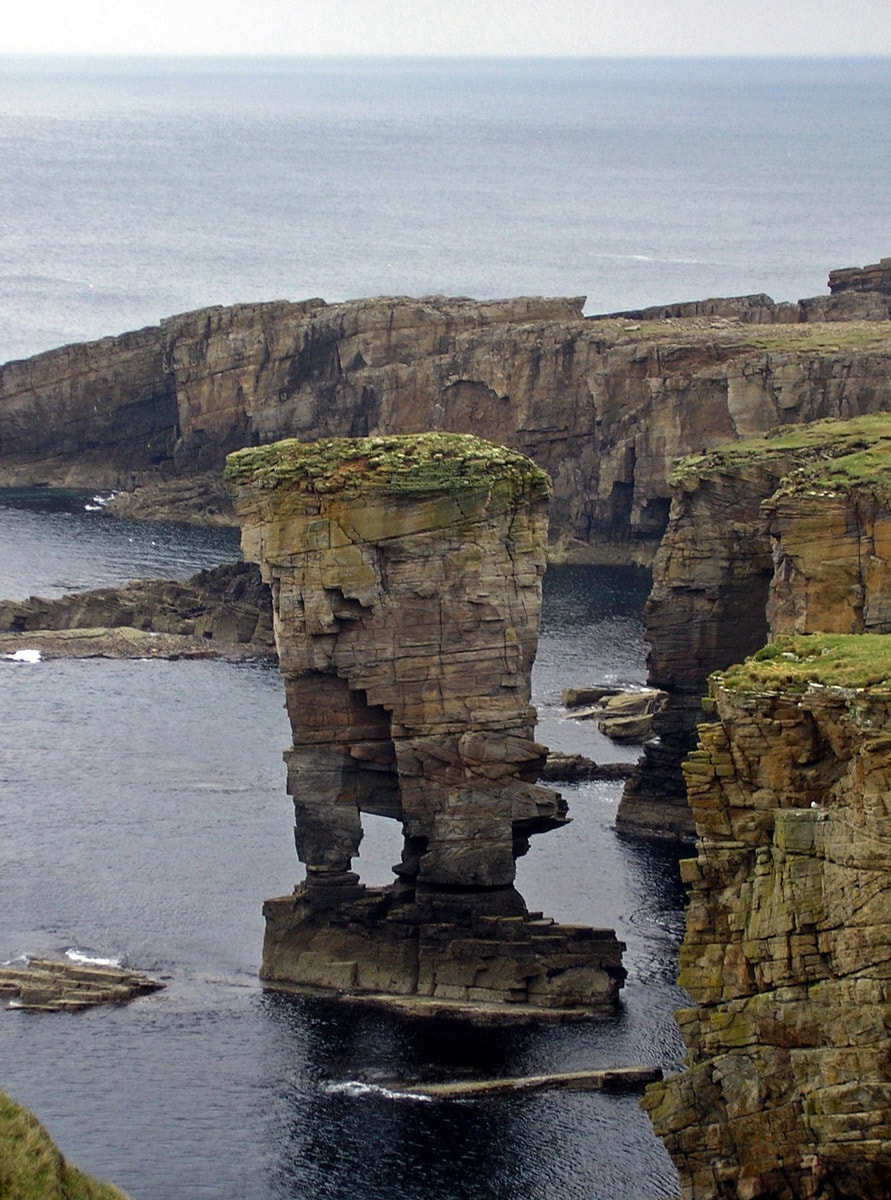
North Gaulton Castle
Very tall and thin rock spire in the sea.
Archaeological wonders
Ring of Brodgar
Circle of standing stones inside of a henge. Developed around 2500 – 2000 BC. Northernmost circle henge in Britain. The diameter of the stone circle is 104 m – the third largest in the British Isles.
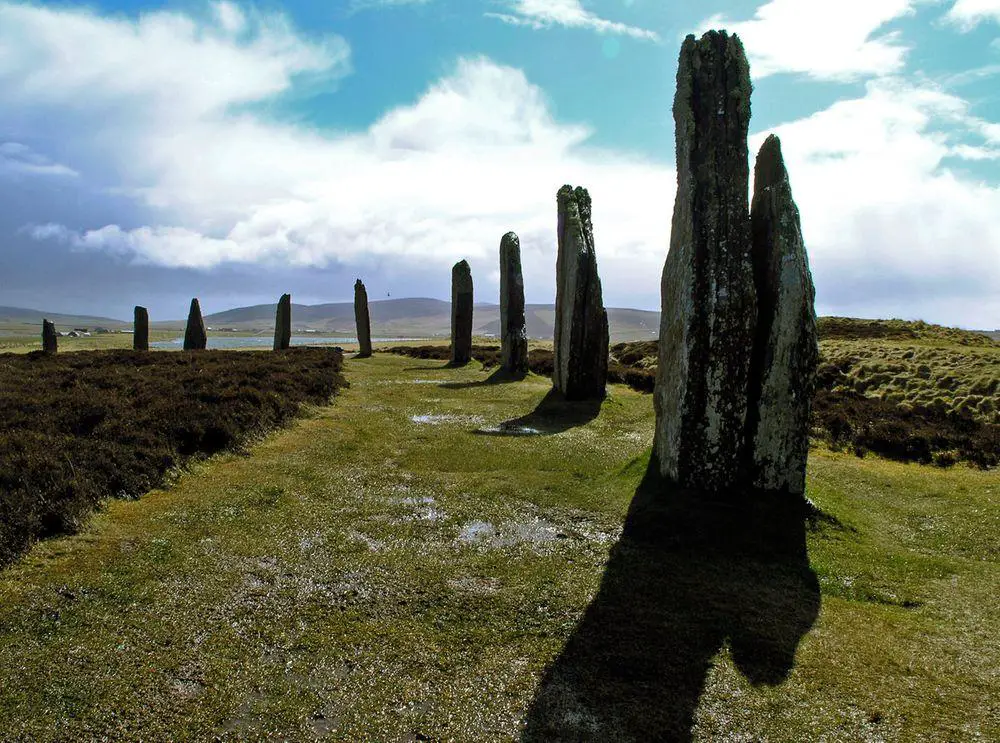
Skara Brae
Impressive, extremely well-preserved Neolithic settlement. Occupied in 3180 BC – 2500 BC. The remaining ten stone houses.
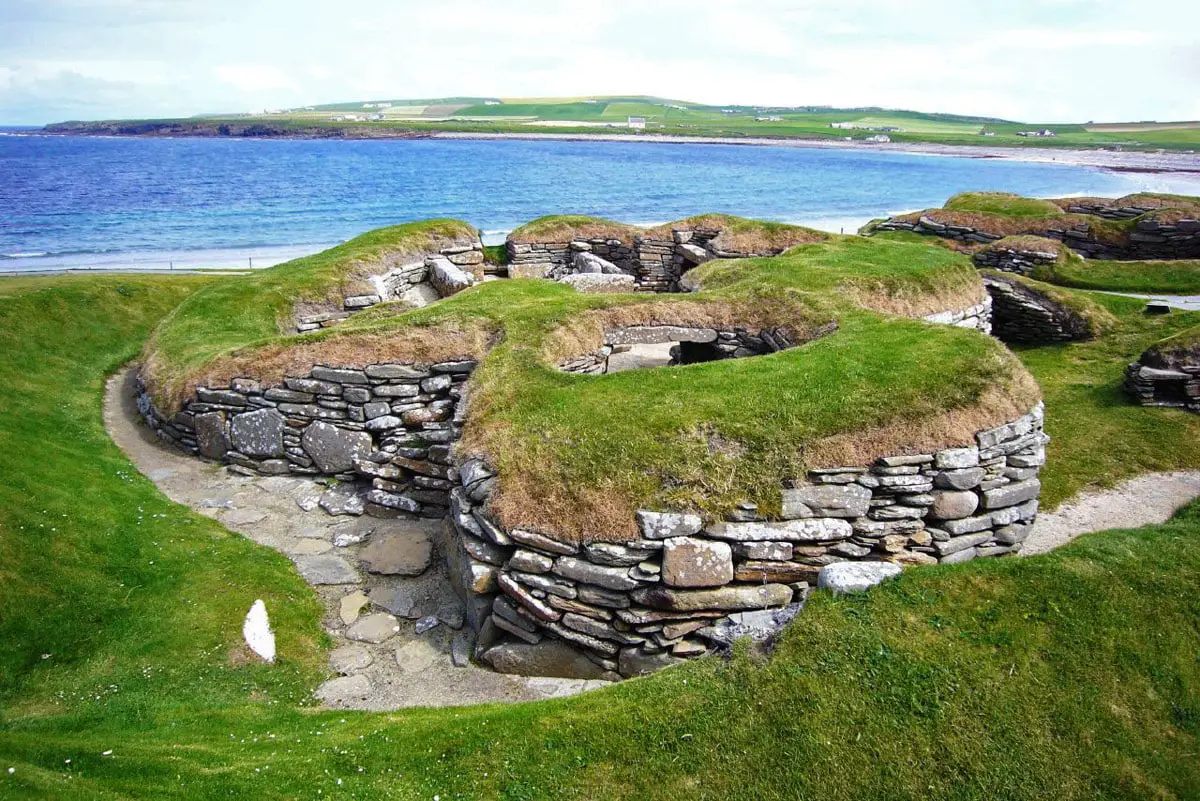
Maeshowe
Enormous Neolithic cairn and passage grave. Represents a grass-covered, 7.3 m high and 35 m wide mound with a ditch around it. Inside the mound are passages and a grave built of stone slabs weighing up to 30 t. The rear wall in the central chamber is illuminated on the winter solstice. Built before 3000 BC. Contains numerous runic inscriptions left by Vikings.
Dwarfie Stane
Unique monument – chambered tomb carved in a single block of sandstone. Possibly the only sample of Neolithic rock-cut structures in Britain.
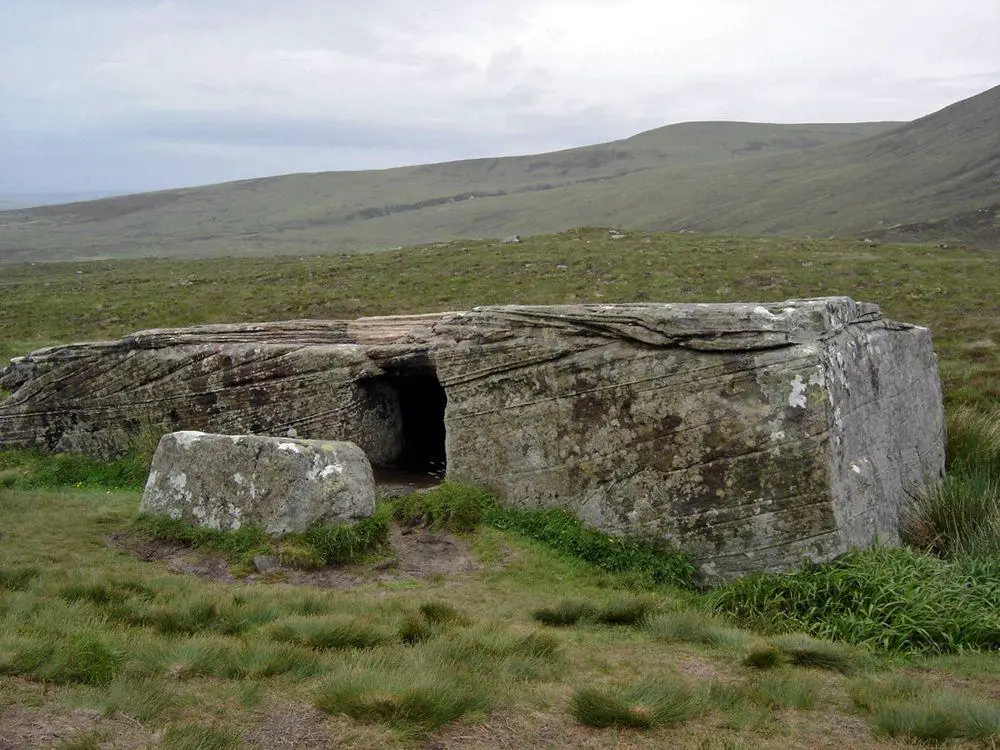
Unstan Chambered Cairn
Large Neolithic chambered cairn of unusual type, built between 3400 and 2800 BC. Very well preserved, original roof replaced with modern concrete roof. The type locality of Unstan pottery – shallow, elegant bowls.
Tomb of the Eagles
Impressive Neolithic chambered tomb built sometime around 3000 BC or earlier. 16,000 human bones were found here, as well as bones of white-tailed sea eagle from a later period.
Underwater structures near Damsay
Megalithic structures under the sea level. Here is also an enormous stone plate with four pillars.
Ness of Brodgar
An important Neolithic settlement with interesting finds that show how people lived here in 3500 BC and later. Here have been found remnants of houses that were painted in bright colors, pottery, and tools. Remnants of some 100 m long stone wall – the possible border between nearby sacred sites and village. Found also a temple-like structure.
Knap of Howar
The oldest preserved house in Northern Europe, one of the best-preserved Neolithic settlements in Europe, was occupied in 3500 – 3100 BC. Similar to the more famous Skara Brae but older. Consists of two dry stone houses.
Quoyness Cairn
This magnificent chambered cairn was built sometime around 2900 BC. Approximately 4 m high. Nearby are 12 Bronze Age mounds.
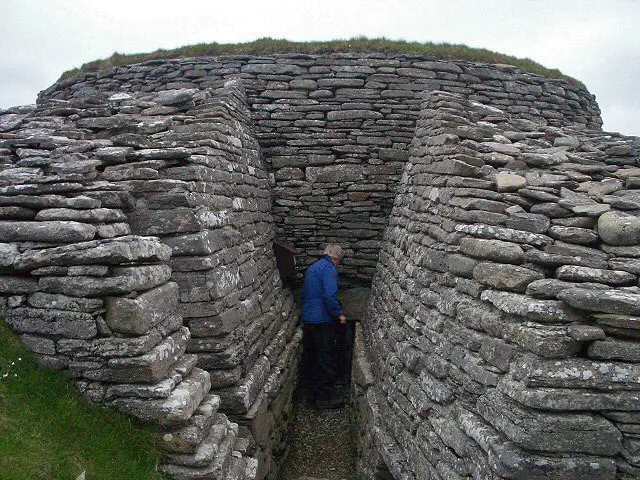
Standing Stones of Stenness
Group of prehistoric standing stones. The central structure is a ring of thin stone slabs – only 4 of the original 12 stone slabs still are standing. Around this ring, there is cut a ditch in the rock – up to 2 m deep. Most likely developed around 3000 BC.
Holm of Papa cairn
20 m long chambered cairn, built sometime around 3500 BC, with ancient carvings on its stones. Possible burial site of Knap of Howar inhabitants.
Broch of Gurness
Neolithic settlement surrounding a central tower – broch. The walls of the broch are up to 4.1 m thick.
Midhowe Chambered Cairn
One of the best examples of Orkney – Cromarty chambered cairn. This impressive megalithic grave was built in the 3rd millennium BC. It contains 23.4 m long central chamber that is divided into 12 compartments with large stone slabs.
Rennibister earth-house
This earthhouse was built sometime around 1000 BC. The large chamber is supported by 4 pillars and 5 alcoves in the walls. It contained bones of 6 adults and 12 children that, possibly, were added here in later times.
Taversoe Tuick
Unique Neolithic circular cairn with two floors, where each floor is accessed via a separate passage.
Mine Howe
Prehistoric monument of unknown purpose – a subterranean chamber that goes down 29 steps to 6 m depth. Especially impressive is the 4 m high corbelled roof made of dry stone. The exact age of the structure is not known, it is created in the Neolithic or Iron Age.
Architecture wonders
Kirkwall St. Magnus Cathedral
Northernmost cathedral in the British Isles, an excellent example of Norman architecture. Construction started in 1137, built over 300 years. Dungeon – prison under the church.
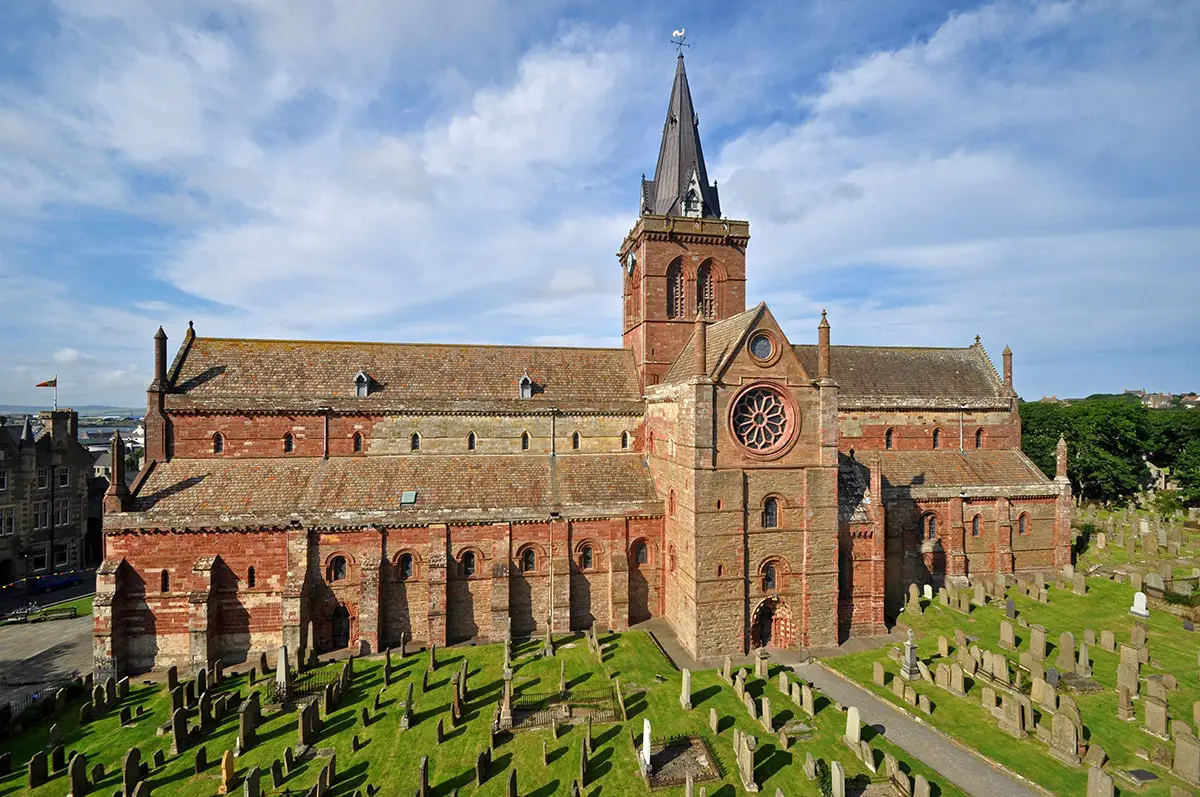
Noltland Castle
Ruins of a magnificent castle, built in the 1560ies. Castle has a very impressive spiral staircase.
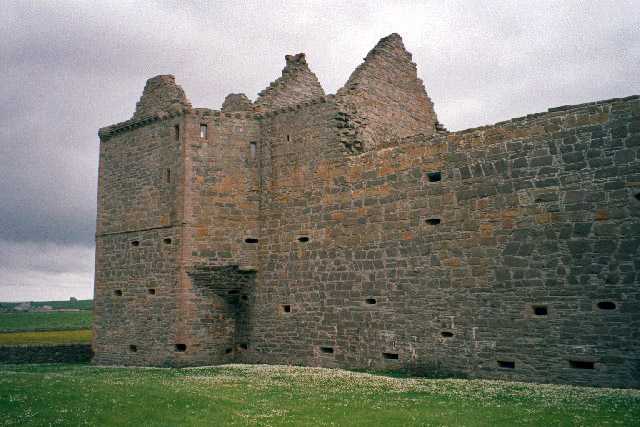
Balfour Castle (Orkney Islands)
Neo-Gothic country home, built in 1847 on the site of an older structure.
Old Stromness
A characteristic small town of Orkney Islands with narrow, winding streets and historical buildings of grey stone.
Kirkwall Bishop’s Palace
Ruins of the bishop’s palace, built in the 12th century, fell into ruins by 1320. Extended in the 16th century.
 Recommended books
Recommended books
Orkney & Shetland Islands Focus Guide
When the rain stops falling and the mist clears there is no more beautiful place on Earth than Scotland’s northernmost archipelagos, the Orkney and Shetland Islands. Leave the Scottish mainland and set foot on a land of ancient relics, deserted beaches, and stunning wildlife. Norse settlers occupied these islands for centuries, making for a unique cultural mix of Scandinavian and Scottish influences. Footprintfocus Orkney & Shetland Islands gives you the information you need to get the most out of your trip; covering beautiful coastlines, mysterious ancient monuments, evocative bays, and glorious wilderness, along with the best places to stay and eat and where to enjoy a wee dram of your favorite malt whiskey.

